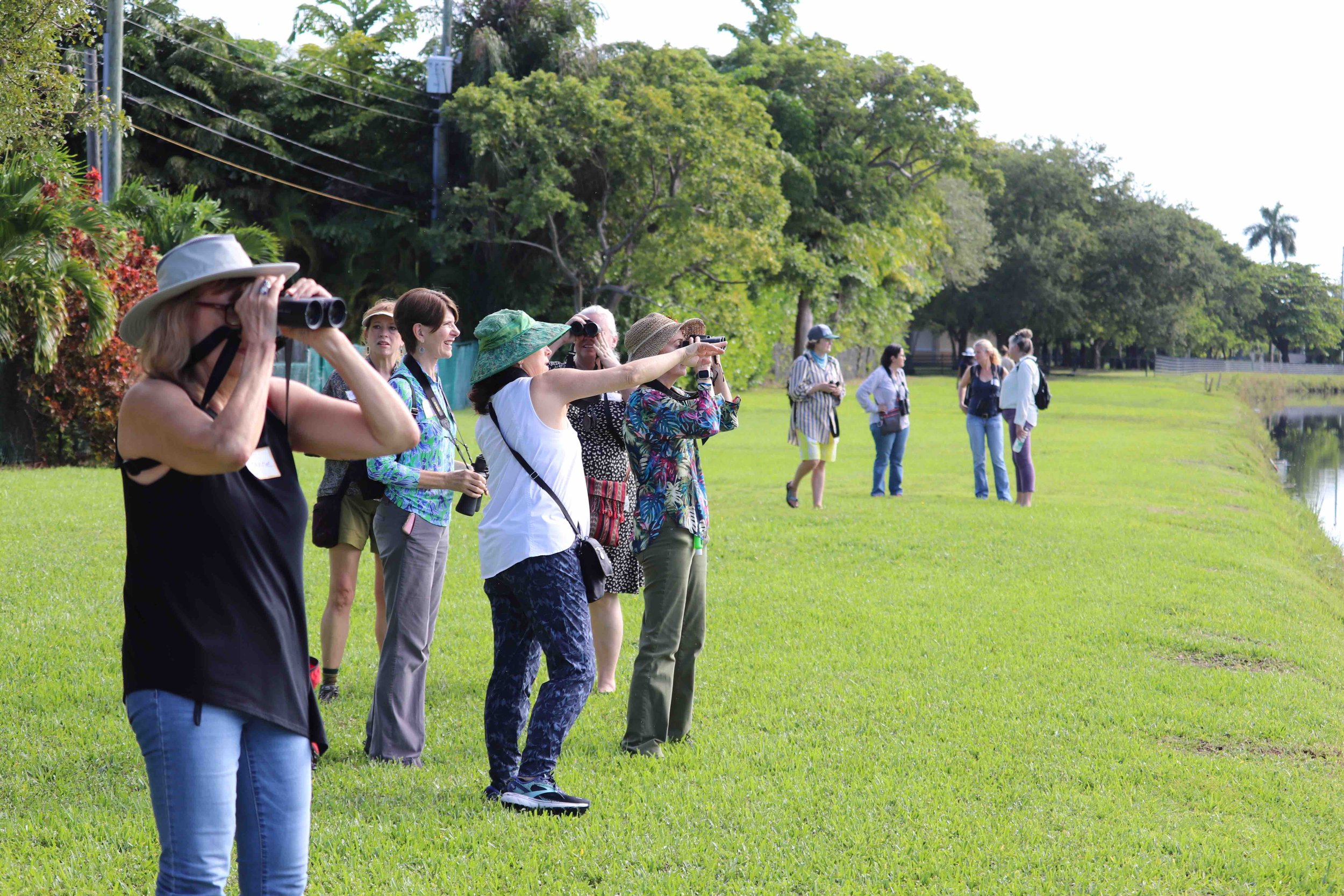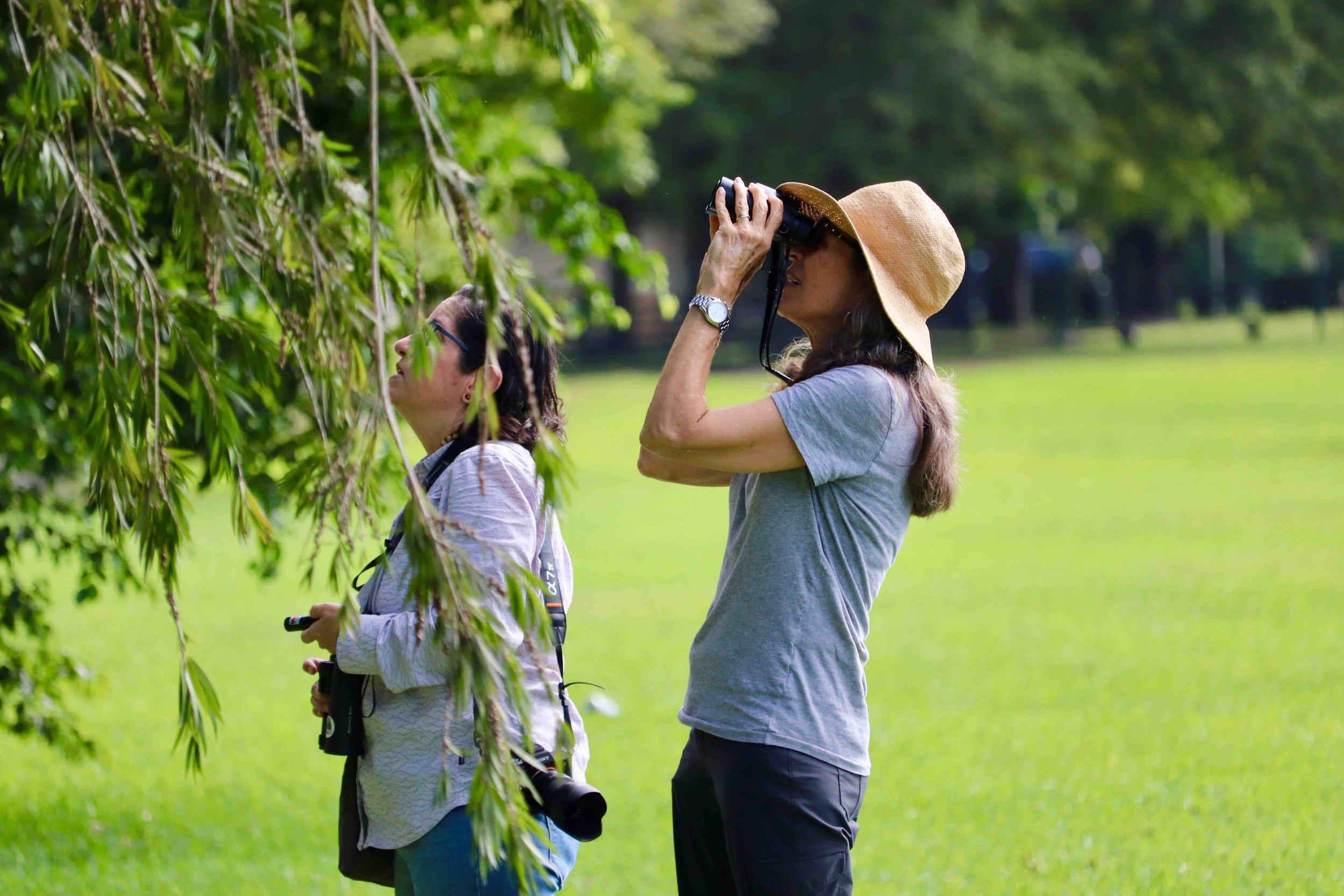A Mad Hatter Tea Party with a Good Starter of Birds!
Sunday November 13 • Dante Fascell Park & Home of Gloria and Bruce Turkel • Report by Roxanne Featherly & Ana Lima • Images Courtesy of Ana Lima
Part I: by Roxanne Featherly
On Sunday November 13, 2022 a group of 23 enthusiastic women birders met at Dante Fascell Park (8700 SW 57th Avenue) in South Miami. For a small suburban park it offers a little something for everyone and their families...playground, pavilion, BBQ pits, tennis and volleyball courts. For the Phoebes it offered a smorgasbord of 35 species of birds; a superb group effort considering fall migration has ended in South Florida with the exception of a few stragglers.
In the spring birds sing, especially the males attempting to attract mates and to warn others away from their territories. In the fall and winter there’s no need to sing since the breeding season is complete. Therefore, we need to use other strategies to find birds such as looking for movement among leaves and branches as well as listening for “chips” “seet” and “buzzy” notes birds make while foraging.
Birds use a variety of calls, for example, to keep in touch with each other while feeding, to signal the presence of a hungry predator or communicate when traveling in flocks. We heard the “shrill chree” calls and the “harsh, raucous” sounds of Yellow-chevroned and Mitred Parakeets flying overhead. European Starlings were identified by typical high-pitched squeaky chattering and whistled notes.
As we strolled through mixed hardwoods of Live oak, Mahogany, Red bay, Norfolk pine, and Flowering dogwood, we heard the “raspy spees” of Blue-gray Gnatcatchers. These tiny and congenial flycatcher-like birds led us to a small feeding flock of scolding vireos (Yellow-throated and Blue-headed) and the “chip” and “check’ calls of Northern Parula, Black and White, Prairie, Palm and Yellow-throated Warblers.
As the morning progressed, Turkey and Black Vultures took advantage of rising columns of warm air called thermals. They use thermals to soar high above in the sky searching by sight and sound for carrion (animal carcasses). Turkey Vultures compared to Black Vultures are larger dark raptors with red-featherless head and necks, long rounded tails and hold their wings in a shallow V shaped flight. Black Vultures are slightly smaller, all black birds with short “cut off” tails and gray-black skin on head and neck. Their wings are silver-gray tipped and held horizontally in flight.
A Phoebes walk is never complete unless we hear and spot an Eastern Phoebe, our namesake. As we headed for the open gate to the canal walkway, we heard two birds calling their names, “Fee-bee” “Fee-bee.” We watched one perched on a bare branch above the water sally out to catch insects in mid-air, then return to its perch. They also glean food from foliage, on the ground and at the water surface.
Although we didn’t find the resident Limpkin along the canal bank, we did spot Great Egret, Common Gallinule, White Ibis, Muscovy Duck and one of my favorites, Belted Kingfisher, emitting a piercing rattle given on the wing. Across the canal we spotted a female American Kestrel perched on a wire. It’s a dainty falcon with two distinct black facial stripes and rust brown tail and back. The male kestrel has slate-blue wings and black-spotted underparts. The female American Kestrel is brown-barred above, has narrow tail bands and brown-streaked white underparts. Kestrals are often heard and identified by a loud shrill “killy, killy, killy”
Moving right along we stopped occasionally to focus on butterflies, flowers, plants and grasses. A special shout-out to Phoebes Michelle Davis, Liz Gushee, Ana Lima and Andrea Diamond for helping out to locate and identify birds. Phoebe Miriam Avello not only assisted in searching for birds but she meticulously used eBird, a free online program to track and tally our final list of birds. This checklist is the Phoebes contribution to citizen science and conservation. Also thanks to Phoebe Kirsten Hines for bringing a field guide, a crucial piece to bird watching gear used to assist those new to birding how to identify birds, learn tips and natural history facts on finding target species. Warmest thanks to the rest of the gals, new and familiar Phoebes, who participated in the event. Your enthusiasm, joy and curiosity is appreciated! Finally we made our way along the canal to arrive at the home and garden of our gracious tea party hosts, Gloria and Bruce Turkel.
Part II: by Ana Lima
A birder and Phoebes enthusiast, Gloria led a stroll through the native hardwood hammock at her yard and neighboring gardens of the late Ron and Elane Nuehring, which opened to an enchanting patio where we gathered for a tea party at the Turkel’s lovely old Florida home in South Miami.
Among the highlights at the gardens was a spectacular Gulf Licaria tree, also known as Pepperleaf sweetwood, which the Nuehrings propagated from a plant in Simpson Park. The Gulf Licaria is a rare tree, currently listed as extinct in the wild, historically known only from Brickell Hammock just south of downtown Miami. We also saw Lignum Vitae, Buttonwood, Brittle Maidenhair, Dahoon Holly, and the endangered Bahama wild coffee.
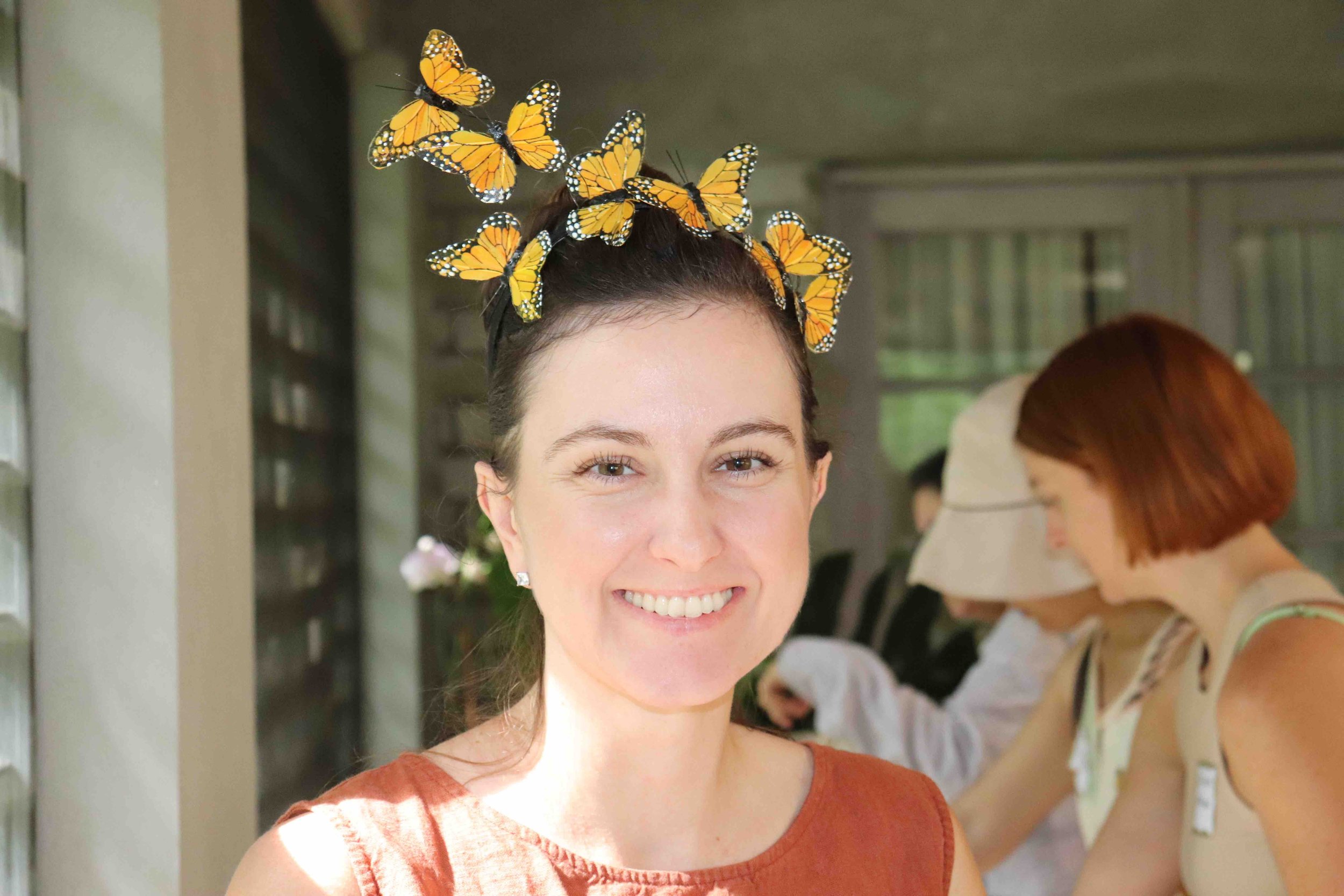
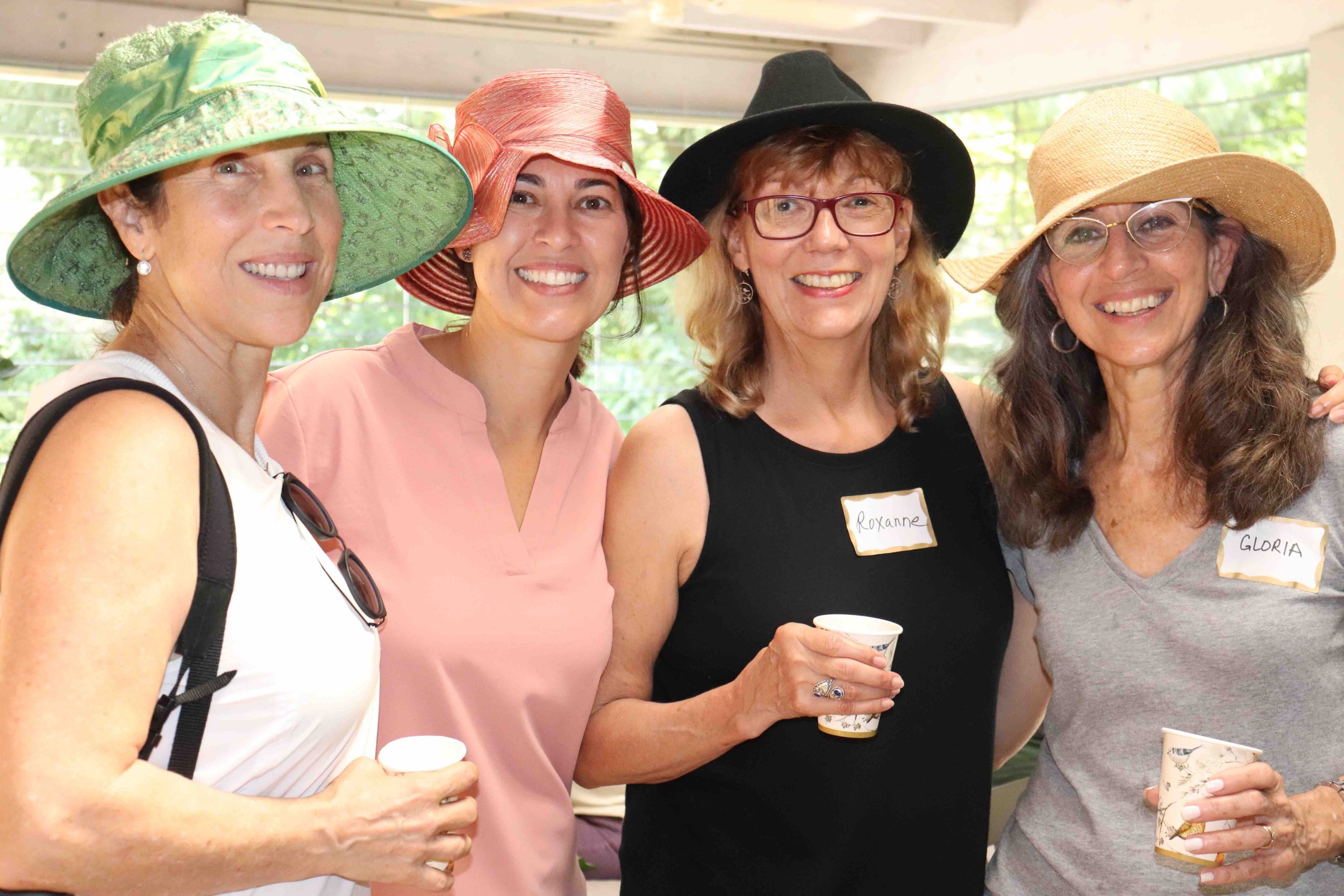
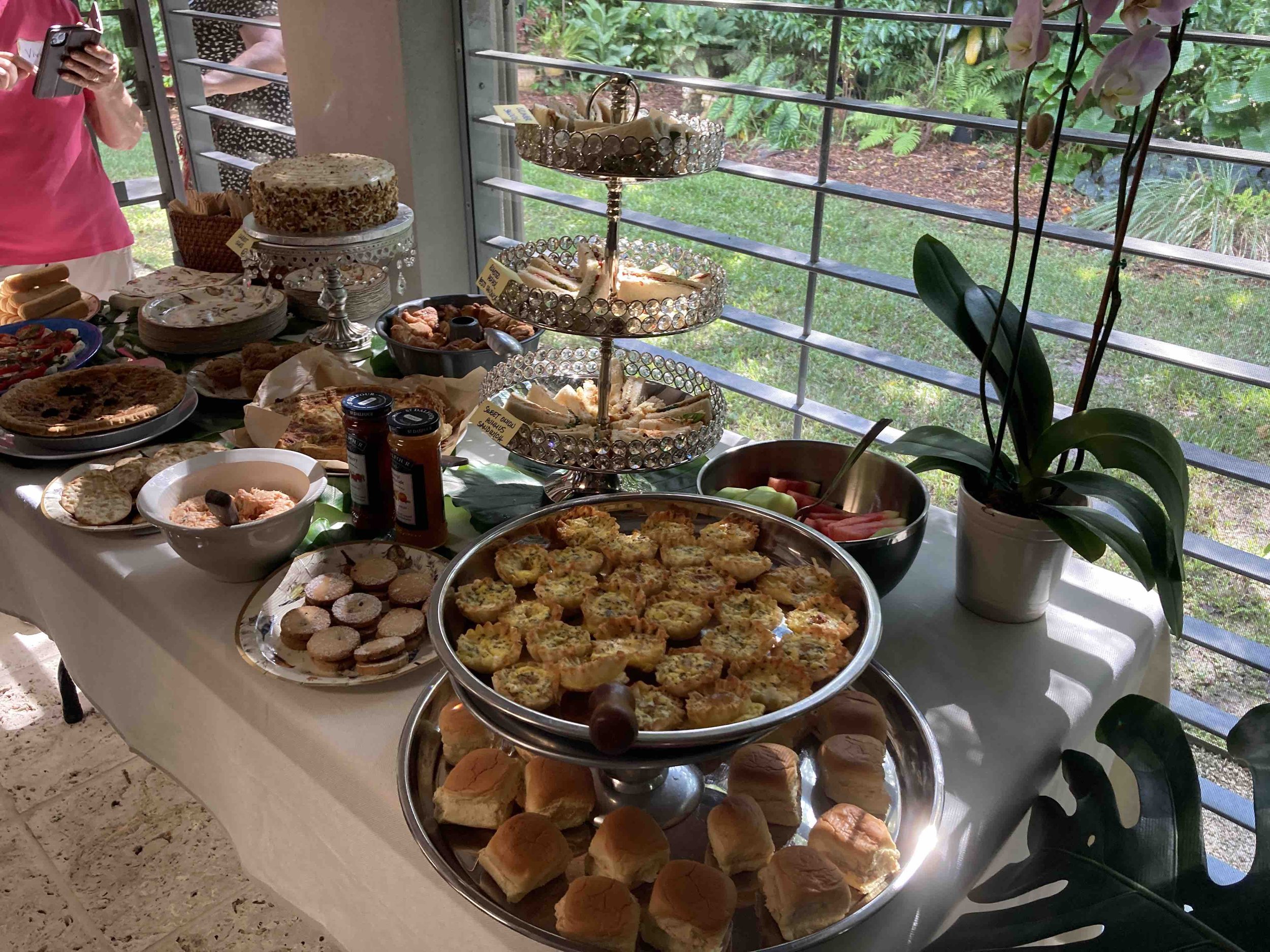
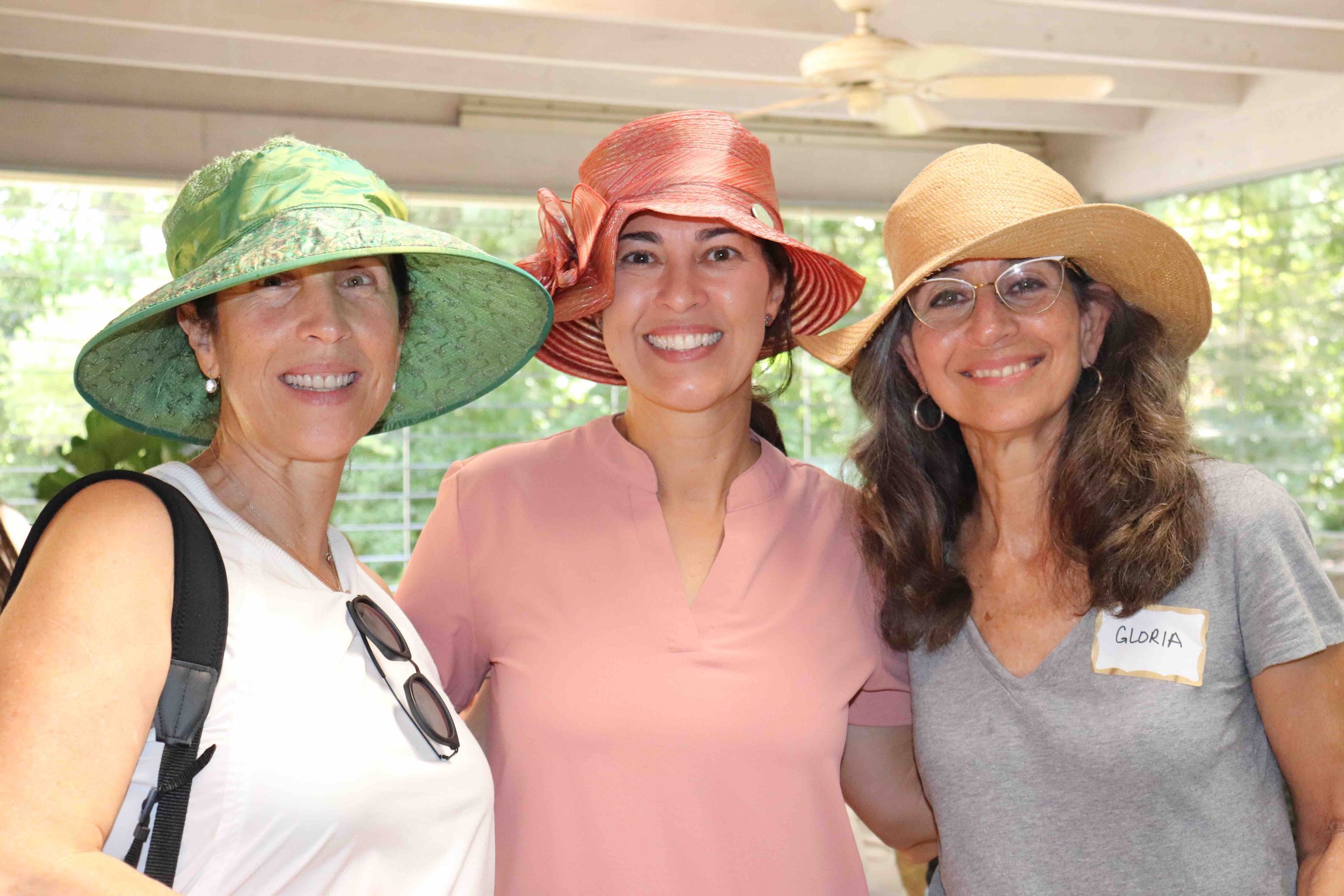
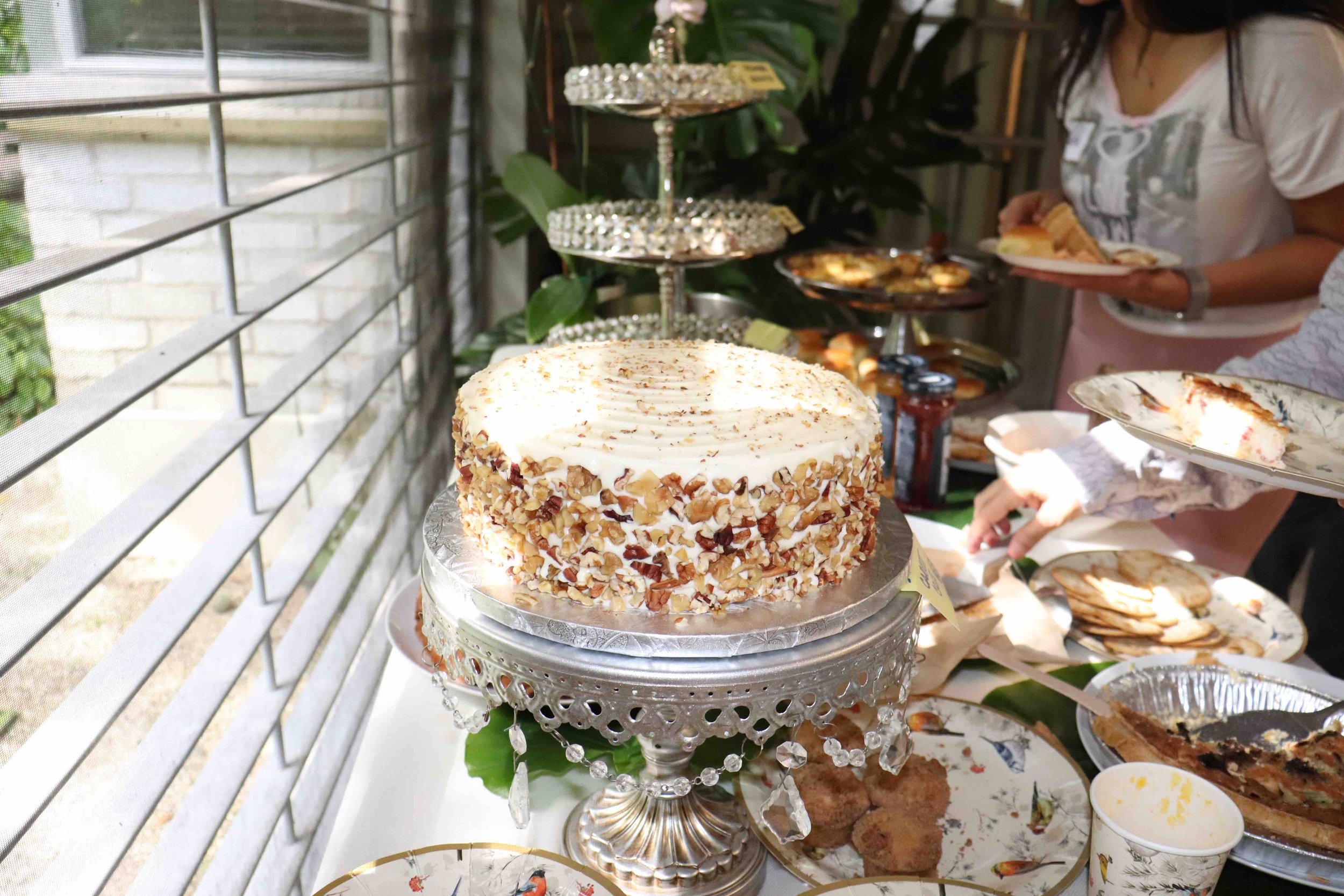
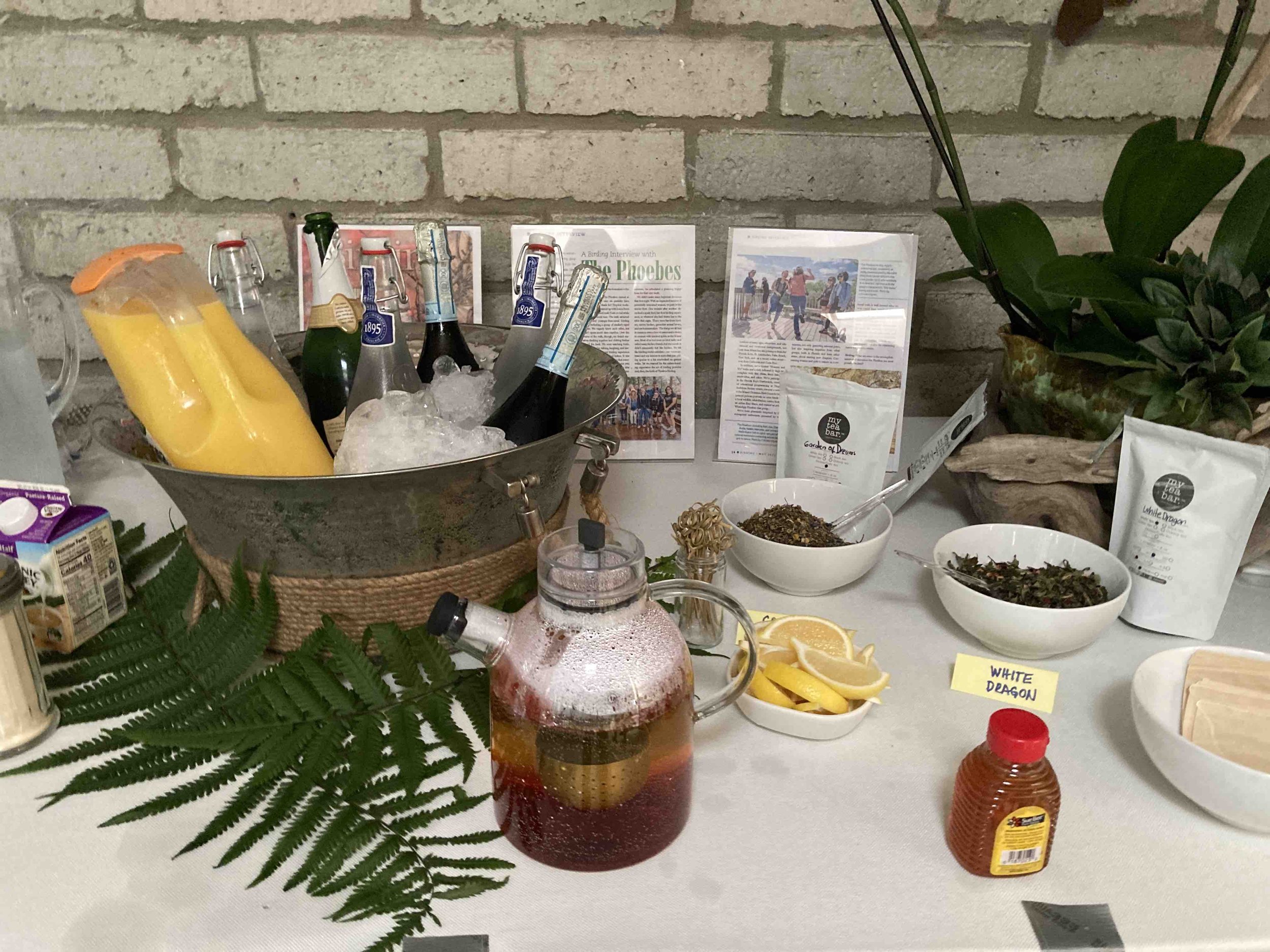
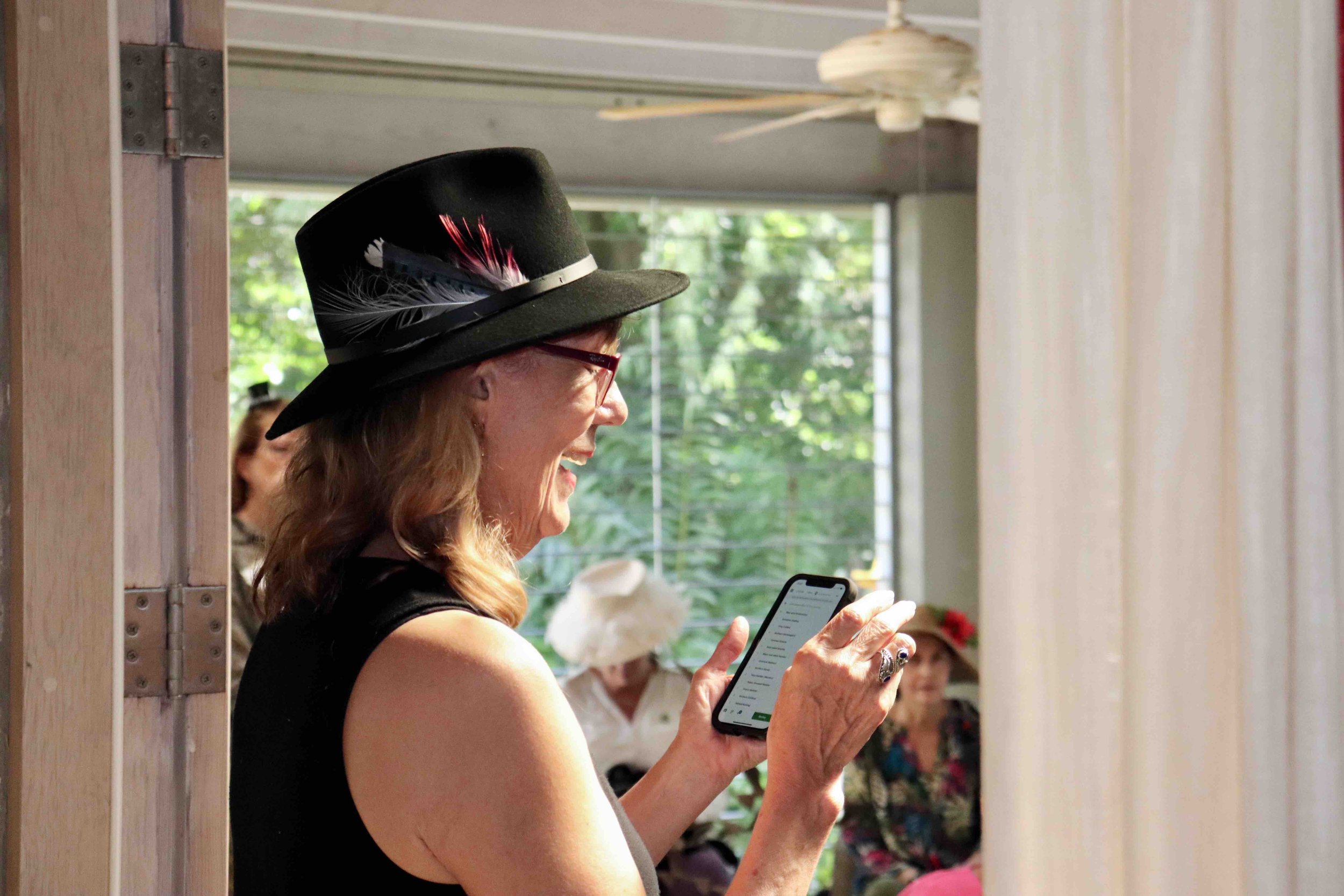
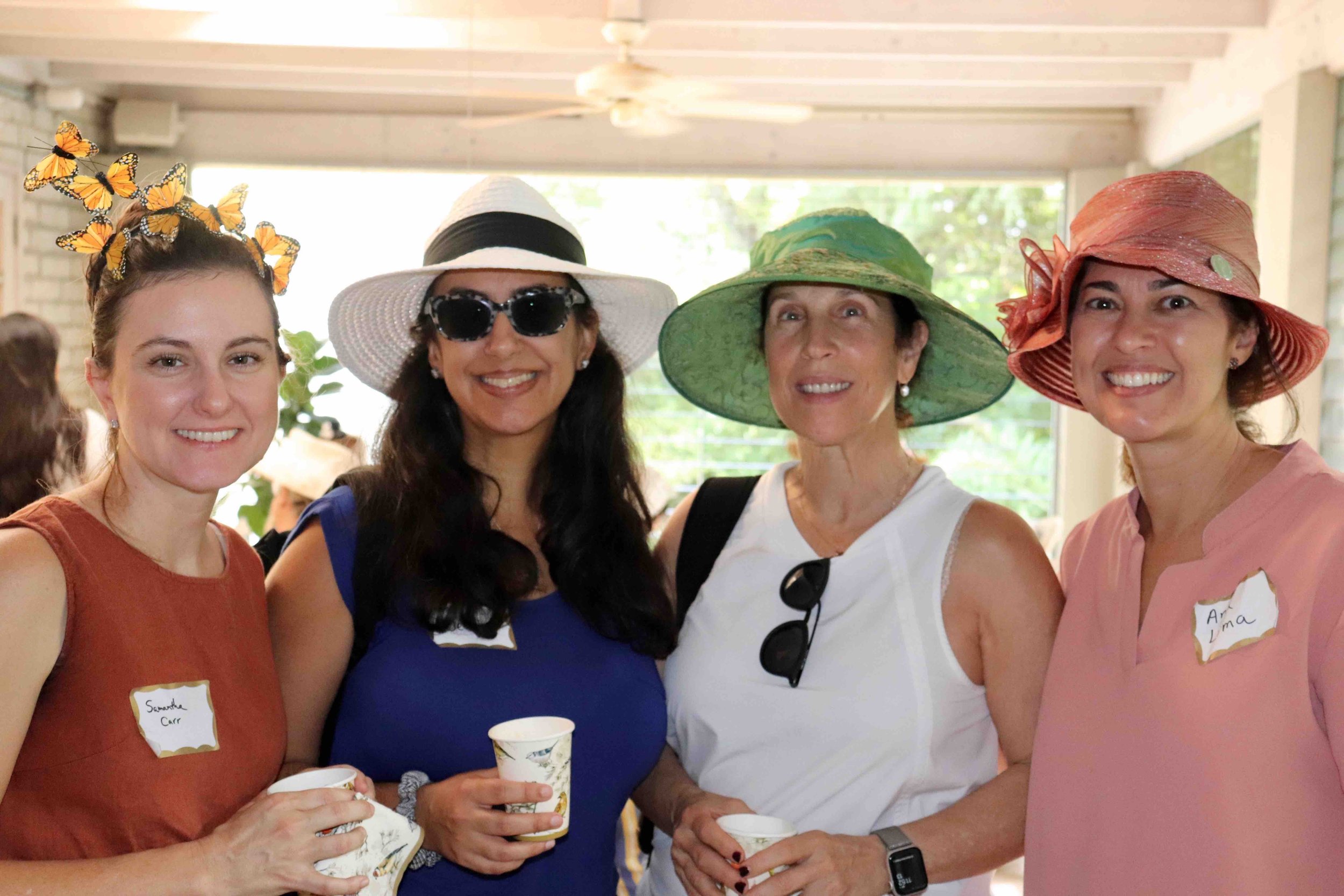

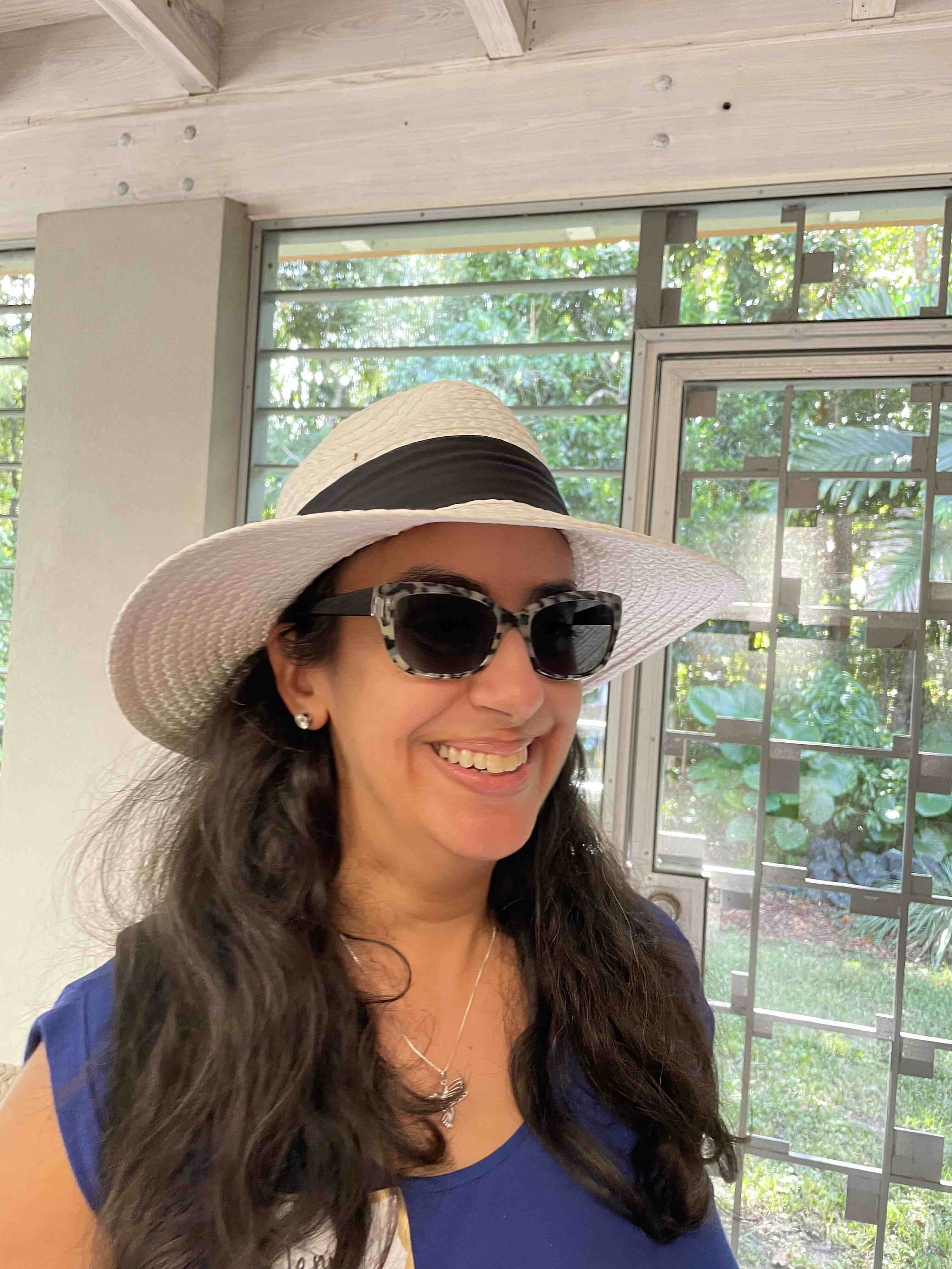

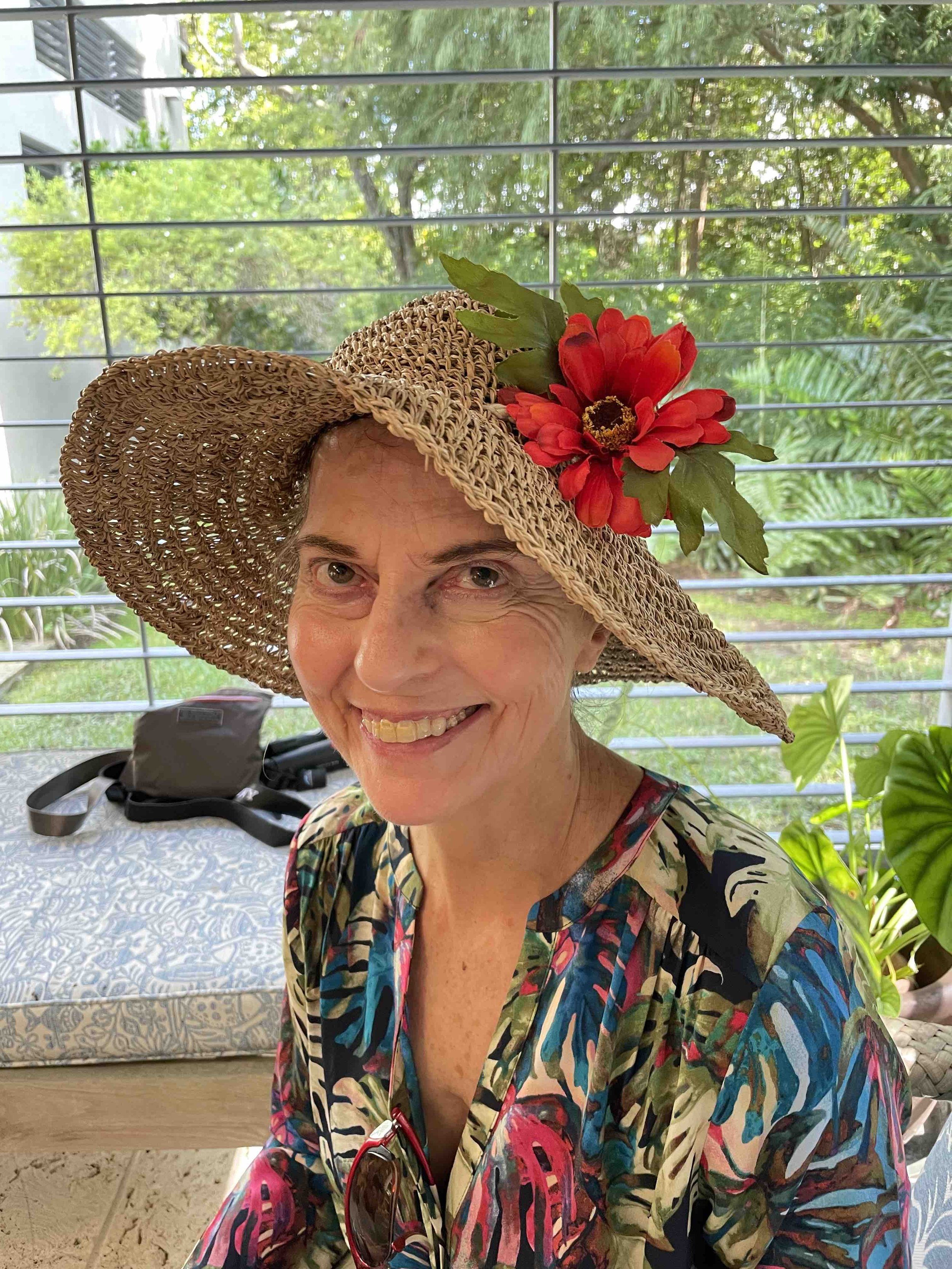
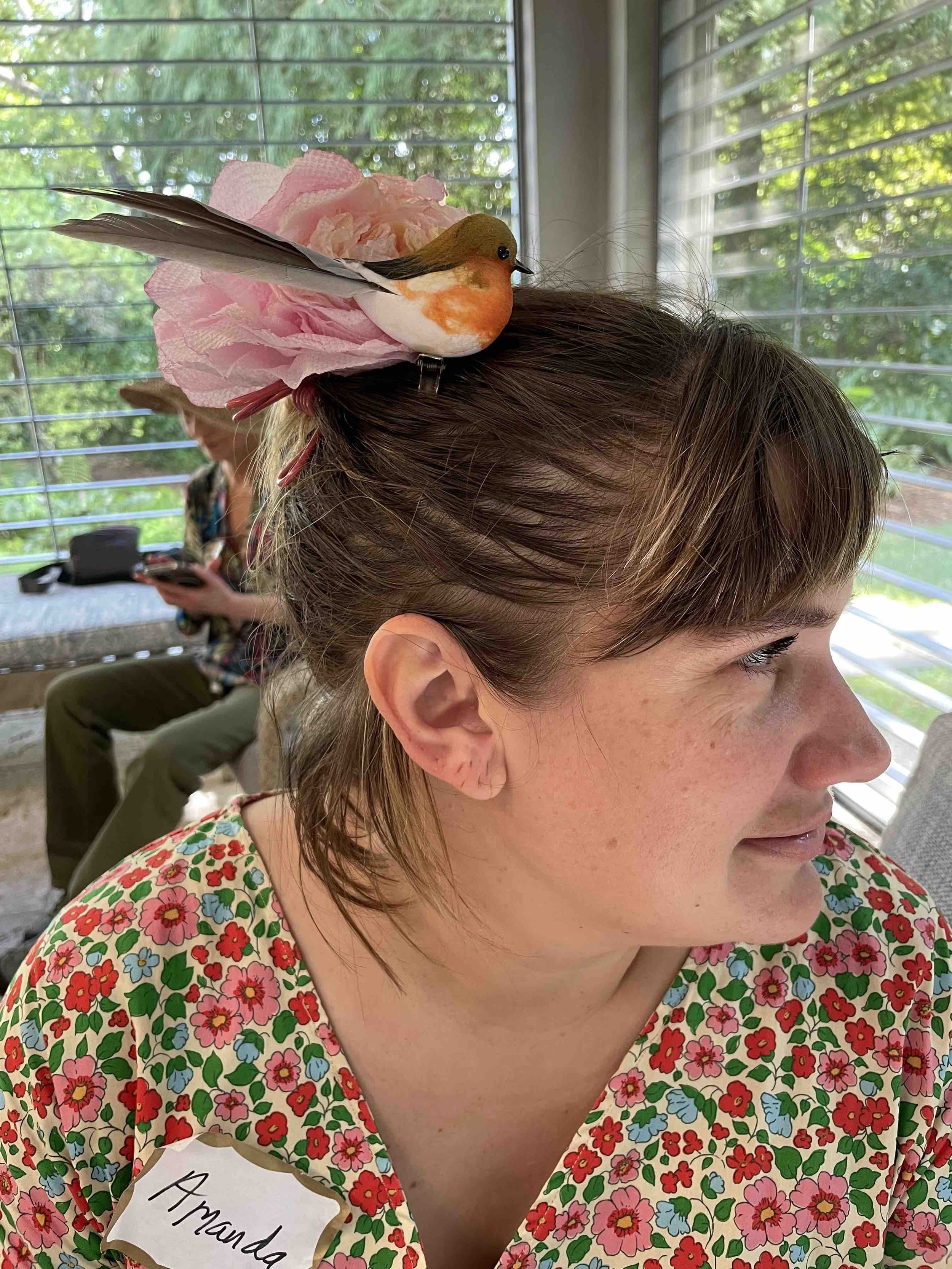
Gloria, who is passionate about maintaining her native plant landscape, explained that a portion of her property has qualified for protection under Miami-Dade County’s Environmentally Endangered Lands Tax Covenant. The program was created in 1979 in an attempt to preserve the dwindling forestlands in the County outside of Everglades National Park, and to provide property owners with an economic incentive to preserve forestland.
It was because of the Turkels’ generosity and affection for nature and for the Nuehrings, avid birders and friends to Tropical Audubon Society, that the Nuehring estate has been preserved. Ron and Elane were dedicated members of the Florida Native Plant Society and often opened up their garden to tours. They were also both very active leaders of the Miami Blue Chapter of the North American Butterfly Association.
Following the gardens tour, we donned our most elegant hats for tea and scrumptious nibbles on the Turkels’ patio, toasting the Turkels, Nuehrings and South Florida conservation while indulging on delectable home-made cookies, exotic teas, and cucumber sandwiches assembled by Bruce, our honorary “Blue Jay.” As usual, the Phoebes brought a small mountain of treats, good humor and friendship to the lovely event.
The lovely Gloria Turkel gives Phoebes a tour of her native plant garden.
Birds We Saw
Egyptian Goose
Muscovy Duck (Domestic type)
Ruby-throated Hummingbird
Common Gallinule
Laughing Gull
Great Egret
White Ibis
Black Vulture
Turkey Vulture
Red-shouldered Hawk
Belted Kingfisher
Downy Woodpecker
American Kestrel
Yellow-chevroned Parakeet
Mitred Parakeet
Eastern Phoebe
Yellow-throated Vireo
Blue-headed Vireo
Blue Jay
Fish Crow
Blue-gray Gnatcatcher
European Starling
Gray Catbird
Northern Mockingbird
Common Grackle
Boat-tailed Grackle
Black-and-white Warbler
Common Yellowthroat
American Redstart
Northern Parula
Palm Warbler (Western)
Yellow-throated Warbler
Prairie Warbler
Northern Cardinal
Painted Bunting




